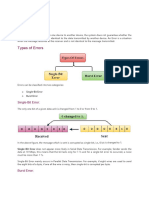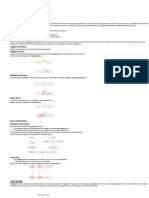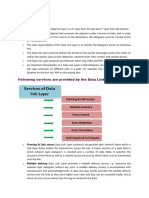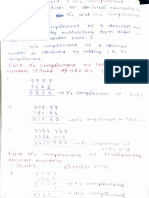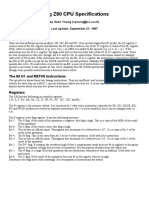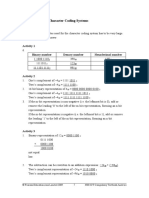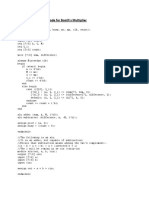0% found this document useful (0 votes)
10 views9 pagesError Detection
The document discusses error detection in data transmission, categorizing errors into Single-Bit and Burst Errors. It outlines various error detection techniques, including Single Parity Check, Two-Dimensional Parity Check, Checksum, and Cyclic Redundancy Check (CRC), detailing their mechanisms and limitations. Each technique aims to ensure data integrity by identifying discrepancies between transmitted and received data.
Uploaded by
dherudynamite66Copyright
© © All Rights Reserved
We take content rights seriously. If you suspect this is your content, claim it here.
Available Formats
Download as DOCX, PDF, TXT or read online on Scribd
0% found this document useful (0 votes)
10 views9 pagesError Detection
The document discusses error detection in data transmission, categorizing errors into Single-Bit and Burst Errors. It outlines various error detection techniques, including Single Parity Check, Two-Dimensional Parity Check, Checksum, and Cyclic Redundancy Check (CRC), detailing their mechanisms and limitations. Each technique aims to ensure data integrity by identifying discrepancies between transmitted and received data.
Uploaded by
dherudynamite66Copyright
© © All Rights Reserved
We take content rights seriously. If you suspect this is your content, claim it here.
Available Formats
Download as DOCX, PDF, TXT or read online on Scribd
/ 9




